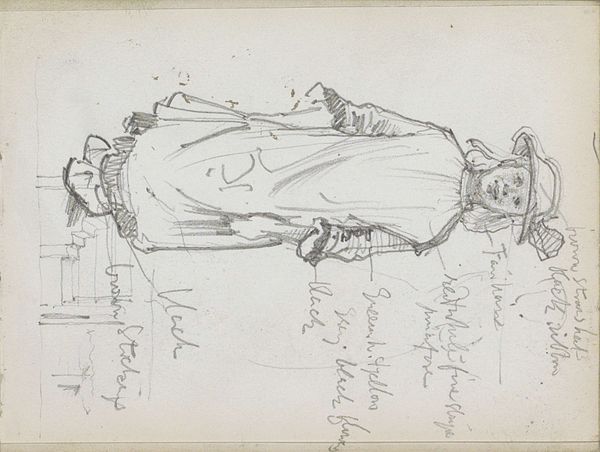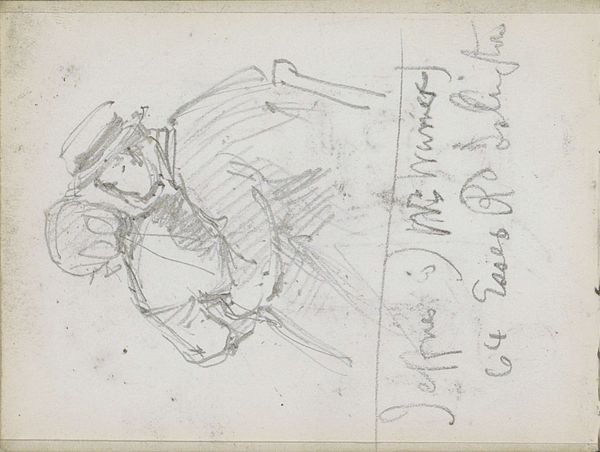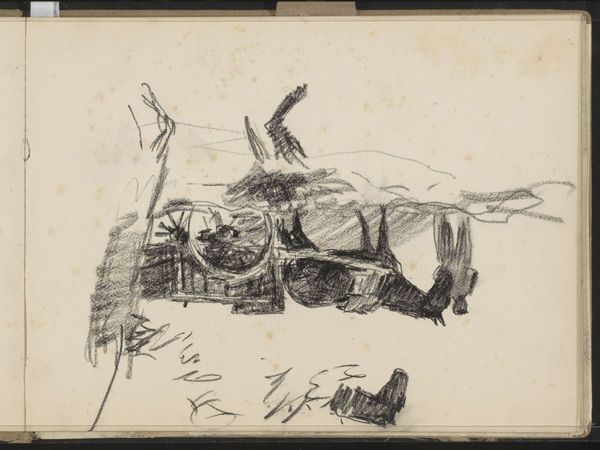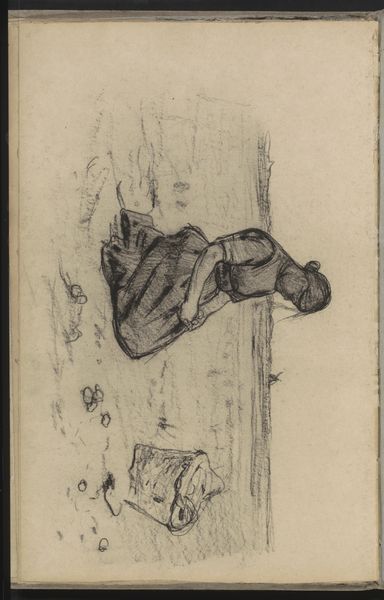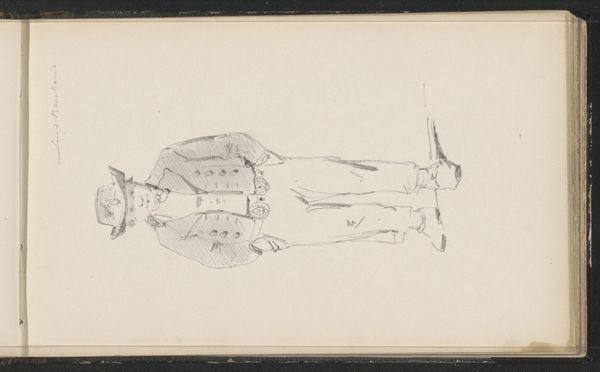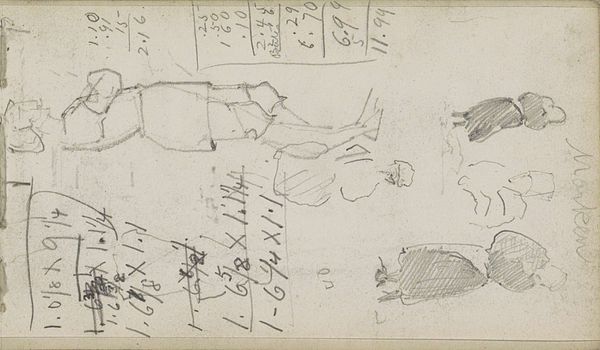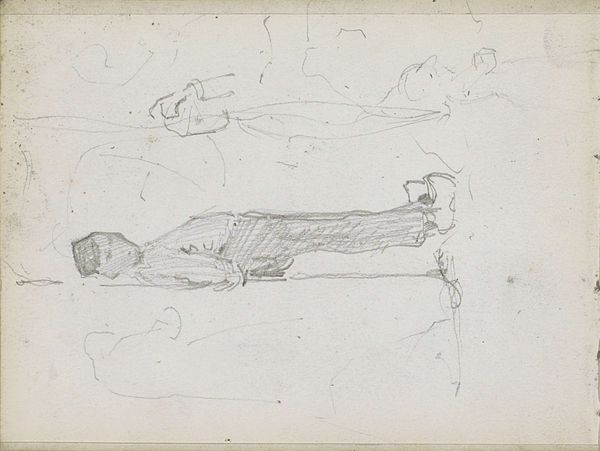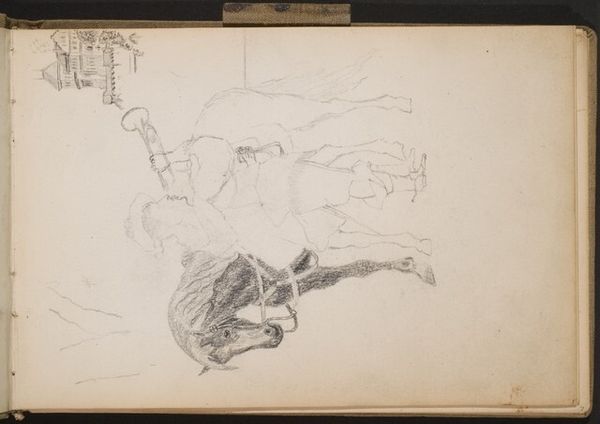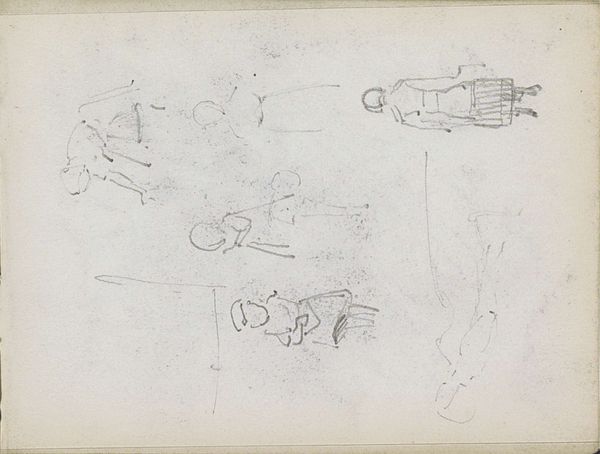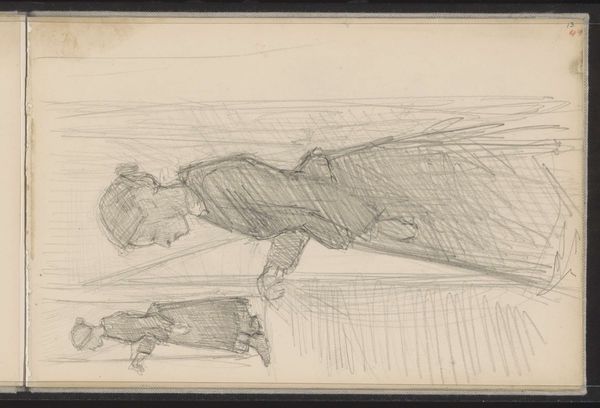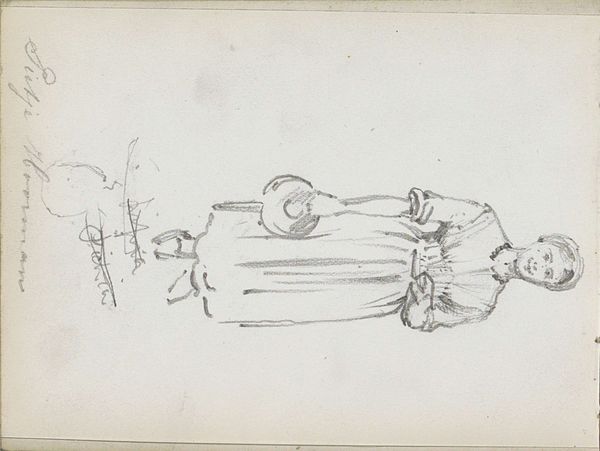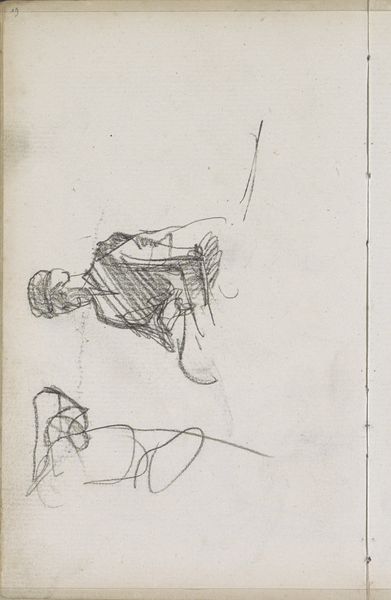
drawing, paper, pencil
#
portrait
#
drawing
#
paper
#
pencil
#
genre-painting
#
realism
Copyright: Rijks Museum: Open Domain
Editor: Here we have George Clausen’s "Standing Woman in Papendrecht Costume," a pencil drawing on paper from 1874. I find it striking how a few simple lines can convey so much about the subject’s stance and attire. How would you approach understanding this drawing? Curator: One must examine the internal framework that establishes pictorial logic. Note how the vertical lines, defining the figure’s dress, stand in tension with the tilted angles of the headwear and shoulders. It is a controlled asymmetry that prevents the sketch from appearing static, isn't it? Editor: It’s subtle, but yes, now I see how the figure leans slightly, adding dynamism. Is the handwriting part of the artwork too? Curator: Certainly. It integrates linguistic and visual semiotics. The artist's script provides denotative anchors—’blue stuff’, ‘wooden shoes’—which guide our interpretation of forms otherwise open to free association. Do these annotations assist in, or perhaps complicate, the formal assessment? Editor: They clarify some details, grounding the image in a specific time and place, but the quick notations seem more like preliminary ideas. Does the combination weaken the drawing's formal power? Curator: Not necessarily. One can consider the notations integral—an extension of the artist’s hand and intention in creating the composition. What does the interplay of the depicted and inscribed do for the structure of meaning? Editor: I appreciate how you directed my gaze to see beyond the literal representation, engaging me in seeing the artistic components as construction. It has enriched my understanding of not just this artwork, but of the artist's creative decisions as a whole. Curator: Exactly. By looking deeply into the lines themselves, their directions, weights, and the relation between visual form and annotation, we can interpret the work far beyond its immediate representation.
Comments
No comments
Be the first to comment and join the conversation on the ultimate creative platform.
